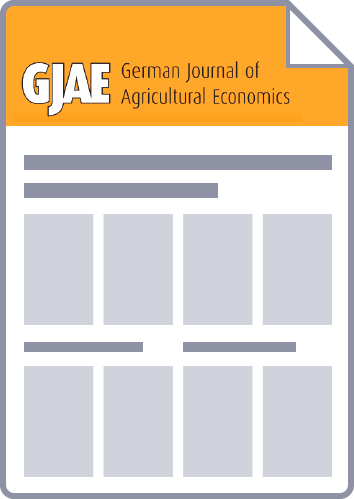Based on data of a survey among 18 organic apple producers in Northern Germany and complementary expert judgements the rentability of transition from conventional to organic production is analysed. It is hypothesized that changing from conventional to organic production is an investment because specific capital items are necessary for such a step. It is further hypothesized that in view of the limited experience and the very restricted availability of extension materials such investment is particularly prone to risk.
The methodology applied to investigate the question of rentability and risk of the investment for the transition to organic apple production includes four steps. First, economic parameters of the 18 existing organic apple producers are being analyzed. Second, the net present value and the annuity of net benefits from transition to organic apple production is calculated. Third, the risk of such investment is analyzed by applying Monte-Carlo type stochastic simulation. This method was also used to investigate the relative advantage of different apple varieties. Finally, the effect of varietal diversification on the mean and the variance of income is investigated by using a MOTAD approach. Choices about varieties are especially important in organic apple production as this is a major tool to control pests and to achieve high prices on the market.
The analysis of the survey data confirmed the observation of previous studies that a distinction between extensive and intensive organic producers is reasonable. Results showed that only intensive apple producers are likely to be economically successful.
The results of investment analysis for a model farm representing the group of intensive producers showed that at a price above 1 DM per kg of apples and a yield of at least 15 t per ha put to transition is economical. Comparing these data with those from the current producers in Northern Germany, transition to organic apple may be recommended to conventional farmers if they are prepared to take the extra risk.
Results of the stochastic simulation confirms the result of the analysis under certainty. When risk is taken into account organic apple production remains an interesting option for farmers who are willing to learn and innovate. Comparing four apple varieties reveals that 'Topaz', a variety resistant to apple scab, is dominating all other varieties frequently grown by organic producers. Nevertheless, planting several varieties makes economic sense when risk is taken into account. Results of the MOTAD model show the trade-off between average annuity and its variance for different portfolios. At an annuity of less than 9 000 DM per ha high diversity can be observed. On the other hand, as income expectations rise, the number of varieties in the portfolio decline. In the extreme case of more than 11 000 DM only one variety, i.e. the variety 'Topaz' remains.
The paper also draws some preliminary conclusions as regards the possibilities for further economic studies on organic horticulture. It is concluded that aside from the severe data problem innovative model approaches are necessary to capture some of the real questions which are asked by the practitioners of organic farming as well as by policy makers. It appears that extending the neo-classic economic approaches by some elements of ecological economics can advance the analysis of organic farming.



